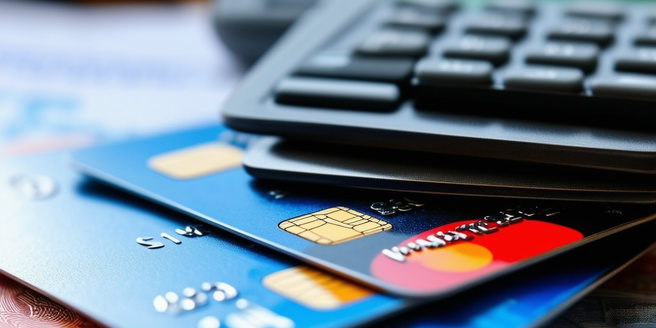
Understanding the Concept of Debt Consolidation
Debt consolidation refers to the process of combining multiple debts into a single debt. This is often facilitated via a debt consolidation loan or by transferring balances to a low-interest credit card. However, it’s important to understand that while it may simplify the repayment process, debt consolidation doesn’t reduce the total amount of debt. The goal of this strategy is to obtain a lower overall interest rate, lower monthly payment or both. Consolidation simplifies debt management as you only need to focus on one payment. It can be a practical solution for individuals burdened by high-interest credit card debt.
Choosing the Right Credit Card for Debt Consolidation
Deciding on the right credit card for consolidating your debt requires careful thought, particularly regarding interest rate, annual costs fee, and balance transfer charges. It’s crucial to pick a card with a lower interest rate than your current debts to maximize benefits. Keep in mind to avoid high annual fees and transfer costs, which can outweigh the savings of a low interest rate. Aim for a card that offers a low APR and doesn’t impose hefty fees considering your financial situation. If you can find a card with an introductory 0% APR on balance transfers, you can save significantly by not accruing interest during the promotional period. In conclusion, when consolidating debt through a credit card, besides seeking a lower interest rate, also look for low or no annual fee and reasonable balance transfer fees, and if possible, a card offering 0% APR on balance transfers. This informed approach can significantly ease the journey to becoming debt free.
Effective Ways to Use Credit Cards for Debt Consolidation
One effective way to use credit cards for debt consolidation is to transfer balances from high-interest cards to a new card with a lower APR. This method can be particularly expedient if you’re juggling multiple cards with high interest rates. Once you have transferred your balances, the next crucial step is to create and stick to a realistic repayment plan. Ensure to repay the debt before the promotional period ends. Another way is to seek a consolidation loan. Here, you borrow a lump sum to pay off your cards, then you pay off the loan at a lower rate.
Avoiding Common Mistakes in Credit Card Debt Consolidation
Credit card debt consolidation can be a successful strategy to manage and lower outstanding debt, but you must avoid several common pitfalls. First, devise a firm and achievable repayment plan to avoid spiraling deeper into debt. Secondly, refrain from using your credit card after transferring its balance during consolidation to prevent doubling your debt and creating a cycle of never-ending repayment. Understand that debt reduction is unattainable with constant additions to the debt pile. It’s crucial to stick to a defined budget, allowing you to clearly track expenditure and allocate income towards debt repayment. Timely payments also help avoid additional interest charges, reducing debt and further financial obligations. If followed diligently, these guidelines can make credit card debt consolidation a smoother and less stressful process.
Case Studies: Success Stories of Debt Consolidation Using Credit Cards
There are numerous success stories of people using credit card debt consolidation. An example is that of a woman who managed to pay off a significant amount of her outstanding debt by combining her credits with a lower interest loan. She was able to save thousands in interest and became debt-free in just a few short years. One such case is of an individual who transferred their debt to a 0% APR card and were disciplined enough to pay it off within the promotional period. Another case involves a couple who consolidated their credit card debts and stuck to a strict budget, dramatically reducing their overall debt in a year.
Maintaining Financial Health After Debt Consolidation
Consolidating debt is an essential step towards improving financial health, which simplifies the process and eases financial burdens. However, it is crucial to exercise control and implement key financial habits like creating and sticking to a comprehensive budget, which prevents a financial relapse. Mindful use of credit cards, mainly for convenience and rewards, and adopting a culture of saving a section of your monthly income as a mandatory part of your finances fosters a healthy financial behaviour leading to investment opportunities and guilt-free indulgences. Always maintain an emergency fund as a safety net for unexpected financial situations, to avoid the temptation of using emergency credit lines, which might lead back to debt. Even though maintaining financial health post-debt consolidation can seem challenging, proactive management, disciplined planning, and financial discipline can make it achievable paving the way to long-term financial steadiness.
